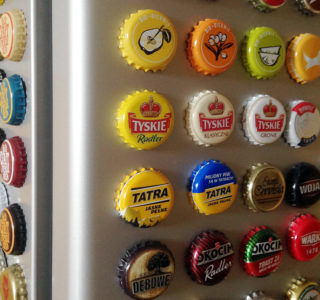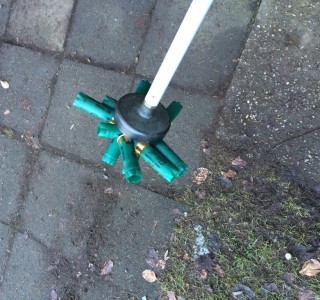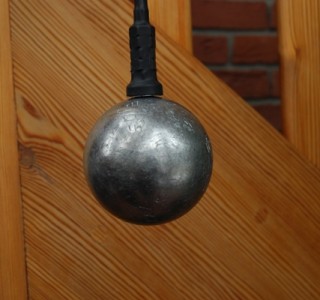Magnets are omnipresent and mysterious.
Everyone knows these hard and dark objects that radiate mysterious powers. You come across them everywhere: They not only keep notes on the refrigerator and close handbags, but are also found in most household and electrical appliances. Magnets attract ferromagnetic metals and therefore stick to the heater or refrigerator, for example. While this attraction is visible, the force cannot be felt. Therefore, magnets are very mystical to many people. Their power is imperceptible to humans – at least not physically. Man can neither hear, smell, see nor directly feel the energy fields of the magnets. How can this be possible? What invisible forces are behind it?
What is a magnet?
Why is a magnet magnetic?
When is a magnet magnetic?
What does a magnet attract?
Where are magnets strongest?
What happens if a magnet breaks?
When does a magnet lose its power?
What types of magnets are there?
Magnets – omnipresent and mysterious
What is a magnet?
A magnet is an object that has its own magnetic field. Magnets are objects that can attract or repel other metals. Metals that have magnetic properties are iron, cobalt and nickel. Each magnet has two so-called „poles“, a north pole and a south pole. These attract the other poles.
If you hold the south pole of one magnet and the north pole of another magnet together, they will attract each other. However, if you try to hold two north poles (or two south poles) together, the magnets will repel each other.
The invisible force that works between the magnets is called magnetic force.
Why is a magnet magnetic?
Not every piece of metal is magnetic. This is because the atoms, or the small pieces of metal that make up the piece of metal, are disordered. All of these particles can be thought of as small magnets. Since these little magnets are disordered, their magnetic forces are suspended. So the piece of metal has neither a north pole nor a south pole. However, these particles arrange themselves by stroking them with a magnet. All of these particles rotate in one direction. This unites their magnetic forces and the piece of metal becomes magnetic. However, this only works if it is a so-called „ferromagnetic substance“ – i.e. iron, cobalt or nickel.
A magnet is magnetic for the same reason. Because this consists of a ferromagnetic material, the elementary magnetic particles of which are all aligned in the same direction. All of the particles that make up a magnet (neutron, electron and proton) individually represent a small and weak magnet. These small magnets combine to form larger magnets by adding their magnetic forces. Protons and neutrons, which make up the atomic nucleus, make this nucleus a large magnet. Atoms are connected to form molecules or crystals. This creates magnets and, accordingly, magnetic forces.
When is a magnet magnetic?
All substances are magnetic insofar as they have so-called magnetic domains. The electrons are aligned in the same way. This cannot always be seen from the outside.
In order for this magnetic property to be activated, all these small particles of the metal piece must be aligned or polarized in the same direction. When a strong magnetic field is applied to the piece of metal, all particles are forced to steer themselves in the same direction, causing the magnetic force to act outwards.
What does a magnet attract?
The attraction of magnets only affects things that contain iron, nickel or cobalt. These three substances are referred to as ferromagnetic substances because they have an iron-like behavior.
Where are magnets strongest?
The attraction of the magnets is strongest at the poles. There is almost no force in the center of the bar magnet. This area is therefore also known as the “neutral zone”. Instead, the magnetic force is much stronger in a horseshoe magnet because the force of both poles is effective in these magnets. North Pole and South Pole work in opposite directions. Therefore, the effects of both the North Pole and the South Pole cancel each other out the closer you get to the center of the magnet. Since the ends of a horseshoe magnet work together, you have the option of lifting heavier loads than with only one pole on a bar magnet.
What happens if a magnet breaks?
Magnets are available in different designs. A simple form of the magnet is the bar magnet. Another and very typical design is the horseshoe magnet. With all of these magnets a distinction is made between the north pole and the south pole. The north pole is often marked with red, the south pole with green or blue.
If a bar magnet breaks in the middle, two new bar magnets result, both of these magnets again having a north pole and a south pole. No matter how often you share these newly created bar magnets, you always get new magnets with both poles.
This happens because the magnetizable substances are composed of small areas, all of which behave like a magnet. These are referred to as elementary magnets. These elementary magnets can be aligned with another magnet. In such a way, bodies can be magnetized.
Heat or vibration demagnetizes the materials again.
When does a magnet lose its power?
No matter how mysterious and fascinating a magnet is, it will not last forever. Although you might not believe it – the magnets lose their power over time. The durability of the magnets is influenced by three things:
Vibration
In contrast to neodymium magnets, all other permanent magnets are sensitive to vibrations. Therefore one should avoid vibrations in order to maintain the adhesive force. So it can happen that if the magnet falls once, the order of the magnet gets mixed up and its magnetic force is reduced. The magnetic force can also be completely destroyed. The more often you shake the magnet, the smaller its magnetic properties will be.
Temperature
Each magnet has its own maximum operating temperature. Neodymium magnets, for example, lose their magnetic force at 80 ° C. Cold can also disrupt the internal order of the magnets.
Magnetic fields
Magnetic fields have put the magnets in order and they can destroy them again. Strong external magnetic fields can mix the particles even though they are uniformly aligned. As a result, the force of these magnets will no longer appear to the outside.
Although magnets can be preserved for a long time by protecting them from the above three factors, there is one more factor that cannot be stopped – namely rust. Corrosion can permanently destroy magnets. To prevent this, cobalt is added in the manufacture of magnets. This prevents decay.
What types of magnets are there?
Natural magnets are magnets that occur freely in nature. These so-called magnetite stones are composed of cooled iron-containing lava and nitrogen. These have the natural magnetism of the earth.
Electromagnets are magnets that are technically created by induction or electricity. Current flows through a coil that is wound around an iron core. As long as the current flows, the iron core carries and holds the resulting magnetic field. These magnets are only magnetic when electricity flows through them.
Permanent magnets are magnets that are industrially manufactured from different materials. Ferrite magnets are mainly made of iron. Neodymium magnets consist of neodymium, iron and boron. AlNiCo magnets consist of aluminum, nickel and cobalt. SmCo magnets are made of samarium and cobalt. Permanent magnets are used, for example, in measuring devices, compasses, microphones and in the hard drives of computers.
Super magnets are a special type of permanent magnet made on the basis of neodymium. Neodymium is a type of the so-called „rare earths“. These magnets are much stronger than ferrite magnets, which is why they are called super magnets. Depending on their size, they have enormous powers. The larger such a magnet, the higher its holding force.




